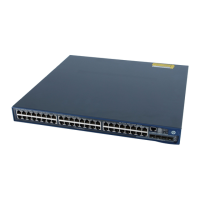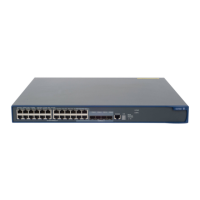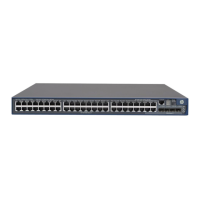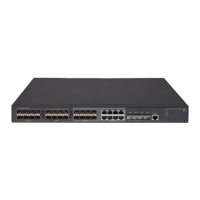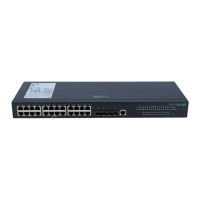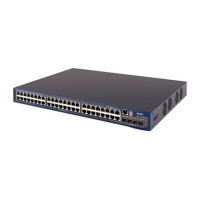39
Prepare an IRF member ID assignment scheme. An IRF fabric uses member IDs to uniquely identify
and manage its members, and you must assign each IRF member switch a unique member ID.
Planning IRF topology and connections
IRF topology
You can create an IRF fabric in daisy chain topology, or more reliably, ring topology. In ring topology, the
failure of one IRF link does not cause the IRF fabric to split as in daisy chain topology. Rather, the IRF
fabric changes to a daisy chain topology without interrupting network services.
IRF port connections
You connect the IRF member switches through IRF ports. An IRF port is a logical interface for the internal
connection between IRF member switches. Each IRF member switch has two IRF ports: IRF-port 1 and IRF-
port 2. To use an IRF port, you must bind physical ports to it.
When connecting two neighboring IRF member switches, you must connect the physical ports of IRF-port
1 on one switch to the physical ports of IRF-port 2 on the other switch.
You can bind several physical ports to an IRF port to create an aggregate IRF link for increased
bandwidth and availability.
The following figures show examples of IRF fabric topologies for the switch. The IRF port connections in these
figures are for illustration only, and more connection methods are available.
A5120 EI daisy chain and ring topology examples are shown in Figure 39 and Figure 40.
Figure 39 A5120 EI IRF fabric in daisy chain topology
IRF
fabric
Master
Slave
Slave
Figure 40 A5120 EI IRF fabric in ring topology
IRF
fabric
Slave
Slave
Master
